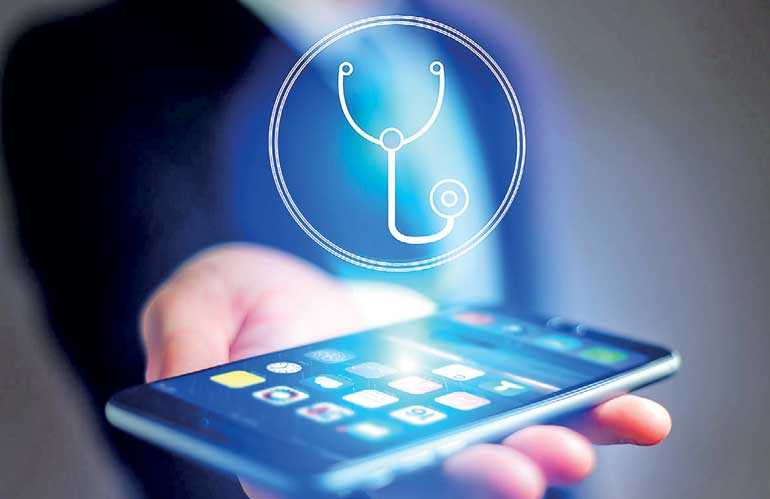Sunday Apr 20, 2025
Sunday Apr 20, 2025
Tuesday, 23 April 2019 00:00 - - {{hitsCtrl.values.hits}}

WHO last week released new recommendations on 10 ways that countries can use digital health technology, accessible via mobile phones, tablets and computers, to improve people’s health and essential services.
“Harnessing the power of digital technologies is essential for achieving universal health coverage,” said WHO Director-General Dr. Tedros Adhanom Ghebreyesus. “Ultimately, digital technologies are not ends in themselves; they are vital tools to promote health, keep the world safe, and serve the vulnerable.”
Over the past two years, WHO systematically reviewed evidence on digital technologies and consulted with experts from around the world to produce recommendations on some key ways such tools may be used for maximum impact on health systems and people’s health.
One digital intervention already having positive effects in some areas is sending reminders to pregnant women to attend antenatal care appointments and having children return for vaccinations. Other digital approaches reviewed include decision-support tools to guide health workers as they provide care; and enabling individuals and health workers to communicate and consult on health issues from across different locations.
“The use of digital technologies offers new opportunities to improve people’s health,” said WHO Chief Scientist Dr. Soumya Swaminathan. “But the evidence also highlights challenges in the impact of some interventions.”
She added: “If digital technologies are to be sustained and integrated into health systems, they must be able to demonstrate long-term improvements over the traditional ways of delivering health services.”
For example, the guideline points to the potential to improve stock management. Digital technologies enable health workers to communicate more efficiently on the status of commodity stocks and gaps. However, notification alone is not enough to improve commodity management; health systems also must respond and take action in a timely manner for replenishing needed commodities.
“Digital interventions, depend heavily on the context and ensuring appropriate design,” warned Dr. Garrett Mehl, WHO scientist in digital innovations and research. “This includes structural issues in the settings where they are being used, available infrastructure, the health needs they are trying to address, and the ease of use of the technology itself.”
Digital health interventions are not sufficient on their own
The guideline demonstrates that health systems need to respond to the increased visibility and availability of information. People also must be assured that their own data is safe and that they are not being put at risk because they have accessed information on sensitive health topics, such as sexual and reproductive health issues.
Health workers need adequate training to boost their motivation to transition to this new way of working and need to use the technology easily. The guideline stresses the importance of providing supportive environments for training, dealing with unstable infrastructure, as well as policies to protect privacy of individuals, and governance and coordination to ensure these tools are not fragmented across the health system.
The guideline encourages policy-makers and implementers to review and adapt to these conditions if they want digital tools to drive tangible changes and provides guidance on taking privacy considerations on access to patient data.
“Digital health is not a silver bullet,” said WHO Chief Information Officer Bernardo Mariano. “WHO is working to make sure it’s used as effectively as possible. This means ensuring that it adds value to the health workers and individuals using these technologies, takes into account the infrastructural limitations, and that there is proper coordination.”
The guideline also makes recommendations about telemedicine, which allows people living in remote locations to obtain health services by using mobile phones, web portals, or other digital tools. WHO points out that this is a valuable complement to face-to-face-interactions, but it cannot replace them entirely. It is also important that consultations are conducted by qualified health workers and that the privacy of individuals’ health information is maintained.
The guideline emphasizes the importance of reaching vulnerable populations, and ensuring that digital health does not endanger them in any way.
WHO’s work on digital health
This guideline represents the first of many explorations into the use of digital technologies and has only covered a fraction of the many aspects of digital health.
In 2018, governments unanimously adopted a World Health Assembly resolution calling on WHO to develop a global strategy on digital health to support national efforts to achieve universal health coverage. That strategy is scheduled to be considered at the World Health Assembly in 2020.
Although WHO is expanding its focus on digital health, the Organization has been working in this area for years, for example, through the development of the eHealth Strategy Toolkit in 2012, published in collaboration with International Telecommunications Union (ITU).
To support governments in monitoring and coordination of digital investments in their country, WHO has developed the Digital Health Atlas, an online global repository where implementers can register their digital health activities. WHO has also established innovative partnerships with the ITU, such as the BeHe@lthy, BeMobile initiative for the prevention and control of non-communicable diseases, as well as efforts for building digital health capacity through the WHO Regional Office for Africa.
Over the years, WHO has released a number of resources to strengthen digital health research and implementation, including the mHealth Assessment and Planning for Scale (MAPS) toolkit, a handbook for Monitoring and Evaluation of Digital Health, and mechanisms to harness digital health to end TB.
On 6 March 2019, Dr. Tedros announced the creation of the Department of Digital Health to enhance WHO’s role in assessing digital technologies and support Member States in prioritizing, integrating and regulating them.